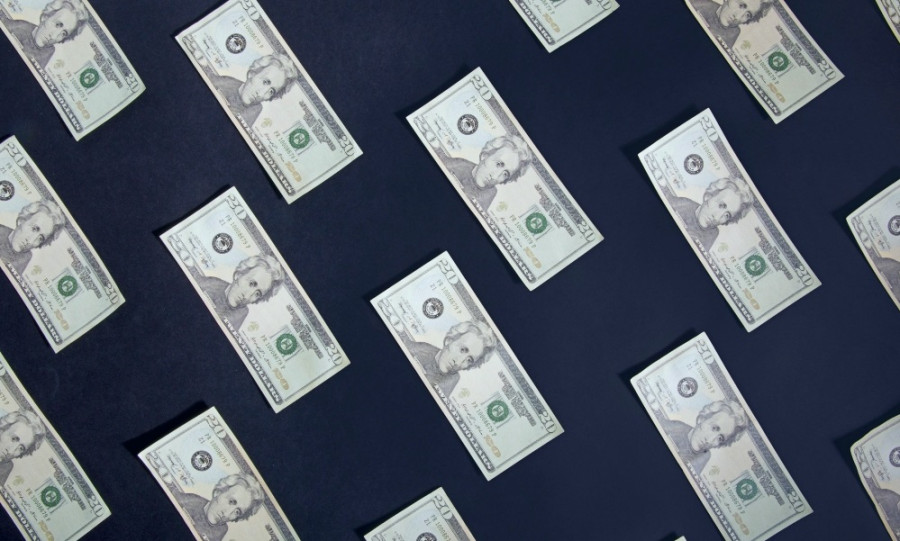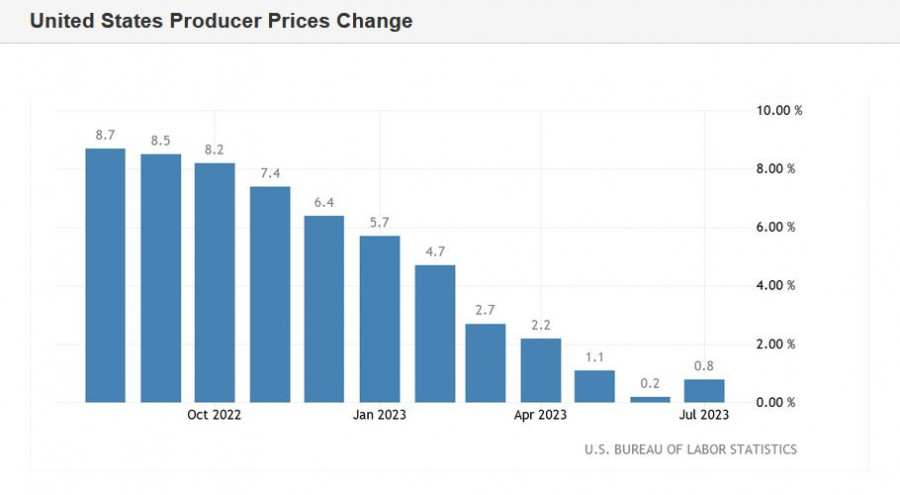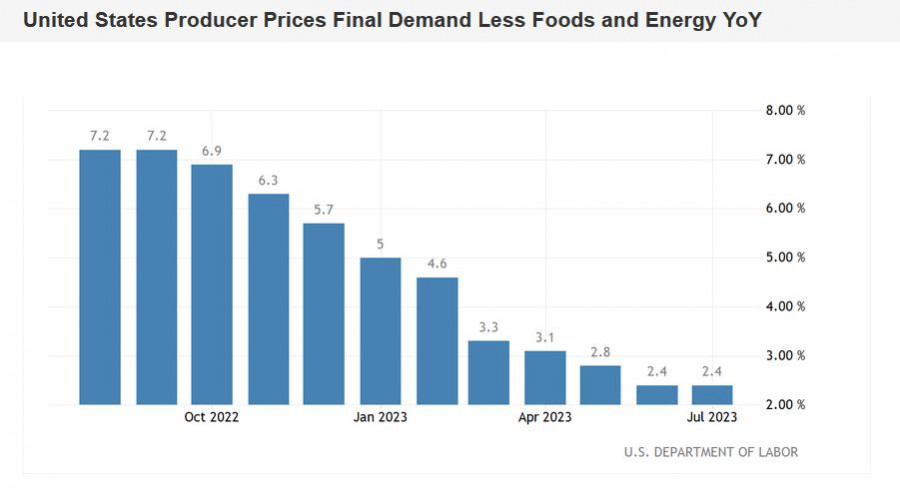The Producer Price Index was published during the start of Friday's US session, which complicated the fundamental outlook for the EUR/USD pair. This indicator can serve as an early signal of changing inflation trends or a confirmation. If over the course of the year, the PPI confirmed the established tendencies of inflation slowdown in the United States, the July result played the role of a warning signal.

For the first time in several months, the index showed an uptrend, thereby supporting the US currency. This result prompts a different interpretation of another inflation report published on Thursday. The July Consumer Price Index disappointed dollar bulls, but it reflected a rather contradictory picture. Traders interpreted the release as negative for the US dollar, tilting the scales in favor of EUR/USD buyers. However, the overall sentiment changed on Friday: the US Dollar Index was regaining lost ground, and the EUR/USD pair returned to the 1.09 range. The report made the intricate fundamental puzzle even more complicated.
The CPI showed an uptrend in July, for the first time in the last 12 months. The indicator rose to 3.2% YoY after June's 3.0% result. On the other hand, the Core CPI, conversely, decreased to 4.7% (the lowest value since July 2021). Traders of dollar pairs focused on the slowdown of the core inflation and ignored the acceleration of inflation. However, looking at Thursday's numbers through the prism of the PPI, a somewhat different picture emerges before us.
Let's look back on the words of Federal Reserve Board Member Christopher Waller, who in July urged his colleagues not to rush to celebrate victory over inflation. As an argument, he recalled the events of the previous year when inflation initially slowed down but then started to pick up again. In this context, he expressed support for further interest rate hikes, citing the resilience of the labor market and strong overall indicators of the American economy.
The rise in the CPI was the first warning signal. The "green shade" of Friday's release added to the fundamental picture, smacking the dollar stronger.
According to the data, the PPI increased by 0.8% on an annual basis, exceeding the forecasted growth of 0.3%. The indicator had been consistently decreasing over the past 12 months but accelerated last month. For comparison, in June 2022, the PPI was at 11.3%, in June 2023, it was already at 0.1%. The July increase to 0.8%, on one hand, is not substantial, but the important factor is the trend itself, especially after a 12-month prolonged decline.
The core PPI was also in the "green". Over 15 months, the indicator gradually but consistently declined, but in July, it remained at the June level, at 2.4%.
Thus, the recent inflation data leave more questions than answers. Will we see a growing hawkish stance from the Fed officials? Will Fed Chairman Jerome Powell focus on the acceleration of the CPI and the dynamics of the PPI, or will the core CPI and the basic PCE index, which reflected a slowdown in inflationary processes, be at the center of attention?


And one more interesting point. Over the past two weeks, several Fed officials have mentioned the rate cut, considering the dovish scenario for developments in the beginning (first half) of 2024. In particular, the President of the Federal Reserve Bank of New York, John Williams, stated that he does not rule out the possibility of a rate cut early next year. The same position was voiced by his colleague from the Federal Reserve Bank of Philadelphia, Patrick Harker. According to him, "a rate cut is likely to start next year." Similar hints were given by the Chairman of the Federal Reserve Bank of Chicago, Austan Goolsbee. He stated that Fed officials should "consider how long it is necessary to keep the rate at such a high level."
Will the stance of the aforementioned Fed officials (and the like) intensify against the backdrop of the unexpected increase in the PPI and the contradictory dynamics of the CPI?
These questions are still unanswered. Therefore, traders of dollar pairs reacted quite cautiously to Friday's release: for example, the EUR/USD pair tested the support level of 1.0950 (the middle line of the Bollinger Bands indicator on the weekly chart), but then returned to the boundaries of the 1.10 level.
Metaphorically speaking, market participants need a "clarification brigade" in the form of Fed officials. If they indicate that they view the recent releases as a threat, the dollar will begin to gain momentum across the market, including in the EUR/USD pair. But if Fed officials continue to take a cautious stance, discussing the side effects of tight monetary policy and emphasizing their attention on the decline in the core CPI and PCE, the dollar will remain under background pressure. In that case, buyers might be able to return to the 1.10 level, test the resistance level of 1.1050 (the middle line of the Bollinger Bands on the daily chart), and pave the way towards the 1.11 level.
The pair was in a hanging state - the inflation data were not enough to tip the scales one way or another. Considering such a degree of uncertainty, as well as the infamous "Friday factor," it is advisable to maintain a wait-and-see position on the pair for now.
The material has been provided by InstaForex Company - www.instaforex.comfrom Forex analysis review https://ift.tt/vU2BiEK
via IFTTT
